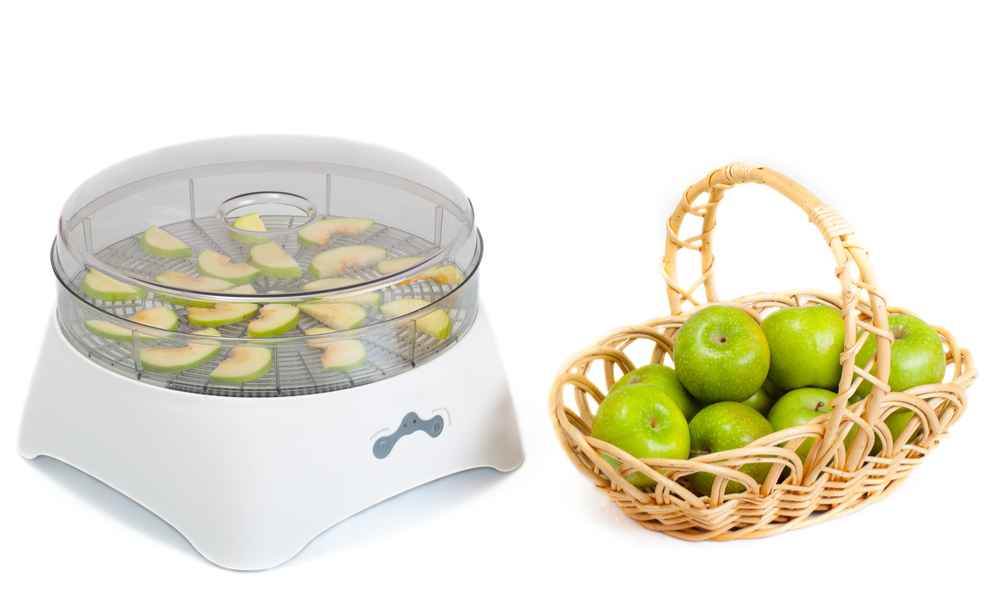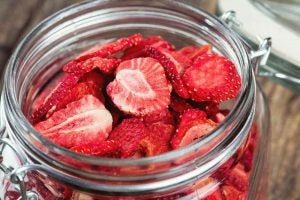5 Essential Tips on How to Dehydrate Food

Take a look at five things every beginner needs to know before using their new food dehydrator:
#1 Choose the Best Food Dehydrator for Your Needs
First thing first; you need a reliable food dehydrator to be able to make amazing dried food recipes. Sure, you can use your oven to dehydrate food, but neither will it be cost-effective (it’s a sure way to rack up your electric bill), nor will it get you the perfect results that a dehydrator will.
Now we know selecting a dehydrator is a nerve-wrecking task. But it really doesn’t have to be. Sure, there’s a plethora of options on the market with each one boasting its own set of features, but we have carefully detailed reviews and buyer guides to help you make the right choice. Depending on your budget, you can find a cheap yet efficient food dehydrator under $100 or go for professional quality models. Simply match the features with your own requirements—it’s as easy as that.
#2 The Right Temperature is Key
To ensure you get perfectly dried foods that are not overly crispy, chewy, or spongy, you need to make sure you dehydrate them at the right temperature and for the right amount of time. For instance, most veggies will need to be dried for 6 to 10 hours at a temperature of 125°-135° F, whereas fruits need longer than that, because they have more moisture content. As a rule of thumb, fruits should be dehydrated at a temperature of 135° F, for anywhere between 12 to 20 hours. When making jerky you need higher temperatures. According to the jerky making guidelines by USDA Meat and Poultry Hotline, you should set the temperature to 160° F when making beef jerky and 165° F when making poultry jerky to avoid any food-borne illnesses. Of course, choosing the right temperature for dehydrating food is not something you need to guess—most food dehydrators will have that information printed out in the manual or you can even look it up online.
One thing you need to keep in mind is that some beginner level dehydrators do not have too many features, and that means they may run at one consistent temperature instead of giving you the option to control the temperature, usually this is at 160°. The professional level dehydrators on the other hand, give you two-level temperature control. You’ll also want to check whether you have an option to set a timer on your dehydrator. An in-built timer is a great option as it allows you a convenient process, where you can set it and forget it.
#3 Don’t Rush the Drying Process
When you dry fruits, veggies, or meat in a food dehydrator, it will take at least a couple of hours—it’s the slow, gradual drying that ensures the intense flavor and the perfect texture. So don’t try to bypass the long dehydrating process by increasing the temperature—you’ll be setting yourself up for failure. Shorter dehydration time on higher temperatures will lead to a lot of moisture staying trapped inside a seemingly dry surface, which you definitely do not want. So, be patient.
#4 Prepare the Foods Beforehand
Before lining your fruits, veggies, or meat on the dehydrator’s rack, you need to make sure you’ve made all the necessary preparations. Anything you put in your food dehydrator should be thoroughly washed and patted dry, of course, but some food groups need a bit extra care before being dried. For instance, some green veggies will need to be steamed for a few minutes before being dehydrated, and fruits such as apple, pear, or banana should be spritzed with lemon juice to keep them from turning brown.
In addition, you should be careful to chop all your foods in uniform shape and size. If any pieces of fruit, veggies, or meat are too thick or thin, big or small, or long or short, then they wouldn’t dry evenly and you’ll have to painstakingly separate the properly dehydrates pieces from the under or over dried ones. Not something anyone wants to do.
#5 Stick to One Food Group at a Time
Don’t mix and match different food groups in one dehydrating round. Why you ask? Well, the answer is multi-fold. To boot, most fruits and veggies have different moisture level, and the different water levels require different drying times. Further, you risk a chance of smell cross-contamination in some food dehydrators. That can yield some really nasty results. So, we’d say being careful in this area. Unless you like eating dried strawberries that smell like onion or nibbling on fruit leather with a hint of beef, that is.
So, there you go. Those our top 5 tips for dehydrating foods. It’s really quite a straightforward process.


